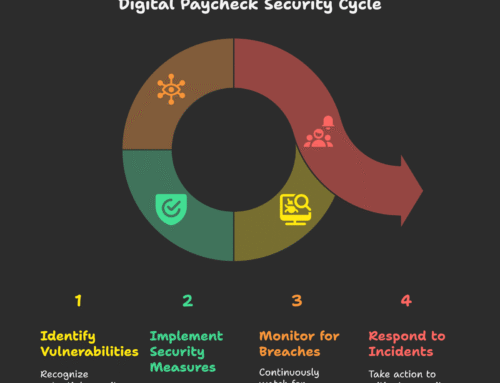Though most people try to leave their personal life at home and focus solely on work when they’re in the office, reality isn’t quite that simple. We can’t subdivide our lives into neat sections. Everyone occasionally finds that a personal matter is distracting them from work, especially in our modern 24/7 work culture.
Fortunately, workplace expectations are changing and employers are beginning to recognize that employees’ personal lives affect them on the job. Unlike in the past, today’s employers recognize the importance of understanding and supporting workers’ personal lives to promote employee wellness.
Professional and personal pressure can contribute to employee anxiety and depression. As a human resource professional, it’s your job to intervene when you see an employee struggling. But how you step in without crossing inappropriate boundaries? Every situation is different, of course, but there are a few basic guidelines you can follow in identifying and intervening on behalf of employees in crisis.
How to Spot a Worker Need
You can’t rely on employees in need to come to you for help for a number of reasons. They may think they can handle the personal issue that’s causing them distress on their own, or they may be too afraid or embarrassed to ask for help. They might feel worried about appearing vulnerable or sharing too much about their personal life at work. That’s why it’s so important for HR professionals to learn how to spot the signs of a worker in need.
Keep an eye out for the signs of emotional and psychological distress. These can include being distracted or confused, changes in behavior, withdrawal during meetings or calling out of work more often than normal, anger and irritability, and tearfulness. You’ll also want to look out for physical warning signs that could indicate a panic attack, like shaking, sweating, and trouble breathing.
Being able to reach out to someone who needs help before they speak up is a powerful thing. Once you learn the signs of an employee in distress, you can intervene before the situation gets worse and possibly leads to disciplinary action that could have been avoided with early action.
Setting the Stage for Trust
Many employees don’t reach out to their company’s HR department because they don’t trust that they will get the help they need or that their interaction with HR will spread around to their coworkers and managers.
This can be even more prevalent for people who make up a minority group in the office. Lack of diversity in the workplace can make employees of various ethnic groups feel isolated and alone.
HR professionals maintain confidentiality standards and aren’t allowed to disclose sensitive information to whomever they want. As an HR professional, you have to remind your employees of the rights they do have to speak with HR and the levels of trust and confidentiality they can except.
Building the trust that allows you to support an employee in need takes time. Listening to employees’ concerns and giving them your attention and compassion will go a long way.
Reaching out and checking in on a regular basis can also help build trust and help an employee understand that you want to support them in any way you can.
Promoting Gender Inclusion for Employee Wellness
It’s a sad reality that we still have a long way to go in terms of gender inclusion in the workplace. Women have historically been under a lot of pressure to keep their personal and professional lives separate, especially when it comes to having children.
Many women worry that they’ll lose their jobs if they become pregnant or that they won’t be respected in the workplace because they are a woman and a mother. For these and other reasons, expecting mothers may experience a range of emotions.
As an HR professional, you have more to offer than just compassion and a willingness to listen. You can promote gender inclusion by helping women to understand their options for maternity leave and advocating for women-friendly benefits within your organization. Giving women the peace of mind to tend to their growing families can boost employee wellness and ultimately improve loyalty, satisfaction, and productivity.
Today, HR Leaders Walk a Thin Line
The truth is that HR leaders have to walk a thin line when it comes to intervening in employees’ lives. Remember, you are not your employees’ therapist and you can’t always accommodate the needs of every employee in crisis. You also need to respect workers’ privacy and know when to pull back.
The good news? It’s not hard to create a safe and welcoming environment for employees who may need extra support. By indicating that your door is always open and you’re compassionate and flexible when it comes to supporting employees in times of personal turmoil, you’ll start to build a culture of trust that may make people feel comfortable enough to come to you when they need help managing work and the other responsibilities in their lives.






Yes, it is very important to have exp. hr